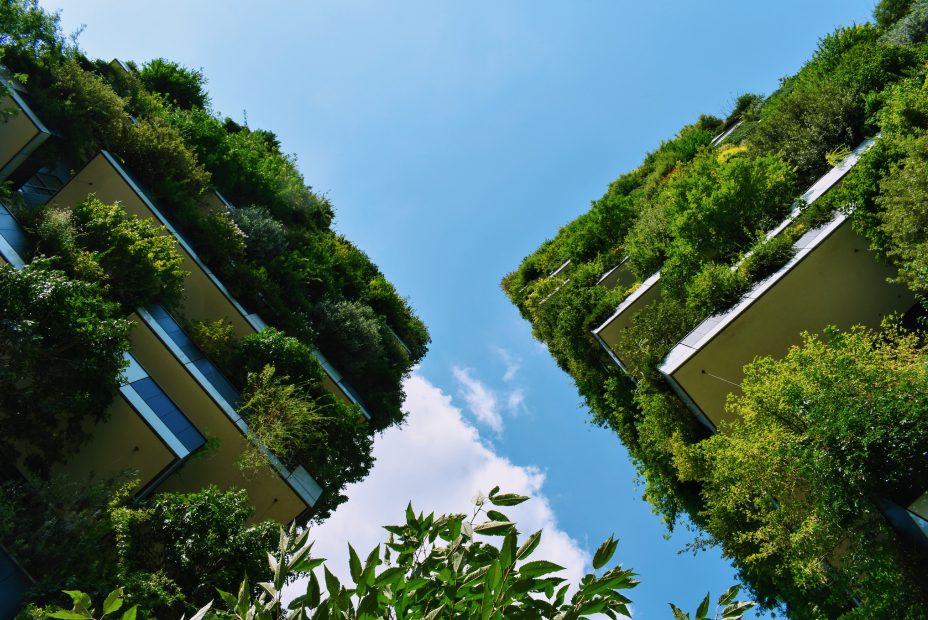
31 May What is a ‘green building’ and what are its features?
Environmentalism or the green movement is gaining increased importance as the world witnesses the effects of climate change every day. A majority of human activities leave a negative impact on the climate and the environment. As cities get more crowded by the day due to the migration of the population from rural regions, the need and importance of buildings have grown as well. Buildings have come to dominate the urban regions as most of the living, working, and services are done within such infrastructures. From residential apartments to office spaces to hospitals or schools or government institutions, all these are now usually in buildings. So it is natural that the concerns about these structures’ sustainability have been raised and more environmentally friendly solutions are applied to them.
Green buildings are ones that in their design, construction, and operation, reduce or eliminate the negative impacts on the environment. Moreover, they can also be capable of creating positive impacts on our climate and natural environment. Such environment-focused features, however, do not hinder the buildings to serve their purpose and functioning properly.
The approach to green buildings need not be the same by builders and developers all around the world. There are numerous factors that come into play when designing and constructing these buildings. From climate conditions to the culture to the economic and environmental needs of the locality where the building will be all influence the features of the green building planned and built.
However, some of the common features that are shared by the infrastructures that can make them ‘green’ are explained below:
- purchase Lyrica Energy efficiency http://crochet247.com/unforgettable-hazel-100th-birthday-blanket-lapghan/ : Efficient use of energy is a vital aspect for buildings to minimise their impact on the environment. Systems such as Building Energy Management Systems (BEMS) help in reducing and optimising the energy consumption of buildings for their operations.
- Renewable energy source: The use of renewable energy, such as solar energy, can reduce the reliance on fossil fuels and also help in reducing the energy bills as most of the power needs are met with in-house energy production. BEMS can help manage energy from different sources to not only provide uninterrupted energy but also minimise the energy consumption from external sources. This ensures that the energy bills are the lowest and the non-renewable energy consumption is also minimised.
- Minimising the use of water and other resources: Right from construction to its operation, green buildings would look to reduce the amount of water and other vital resources such as fuel consumed. The use of water meters, efficient taps, or even rainwater harvesting are some of the methods by which water can be saved.
- Pollution and waste reduction measures: As green buildings look to reduce the impact on the environment, the pollution and waste from these infrastructures need to be as low as possible. Promoting re-use and recycling habits, use of low-waste products and processes, and the right treatment of waste are some of the ways buildings can achieve this.
- Good indoor environmental quality: For the inhabitants or occupants within the building, it is important to ensure a pleasant and healthy atmosphere. Right thermal control, air cleanliness, and low noise are a few considerations to have in this regard.
- Use of non-toxic and sustainable materials: During construction and everyday use, green buildings should look to use materials and resources that are more sustainable or even recycled materials. For example, for insulation, cellulose can be a great greener alternative as most of them are recycled newspapers. Whereas for regular upkeep such as cleaning the floors and other areas, there are solutions that are more eco-friendly.
- Ideal location: The location is important because the buildings should not affect the natural habitat in their surroundings by having them built in environmentally sensitive locations. Moreover, a location which can be accessed with public transportation would mean lower use of private vehicles and thus the burning of fossil fuels is subsequently minimised.
- Design innovation: Green buildings must be built on a design that enables the sustainable strategies planned for the building. It enables the building to be adaptable to changing environments. A smart design can maximise the resources available to the green building in order to attain maximum efficiency in construction and operation. For example, passive design is a popular concept that looks to maximise the local climate to create and maintain the ideal indoor environment for the inhabitants of the building. This helps in reducing the dependence on energy and devices to control the indoor environment.
KNX Association has been partnering with builders, manufacturers, and other institutions to develop the latest technologies such as BEMS, HEMS, and standards for the best energy management solutions for buildings and other infrastructures. Visit www.knx.org to learn more.

